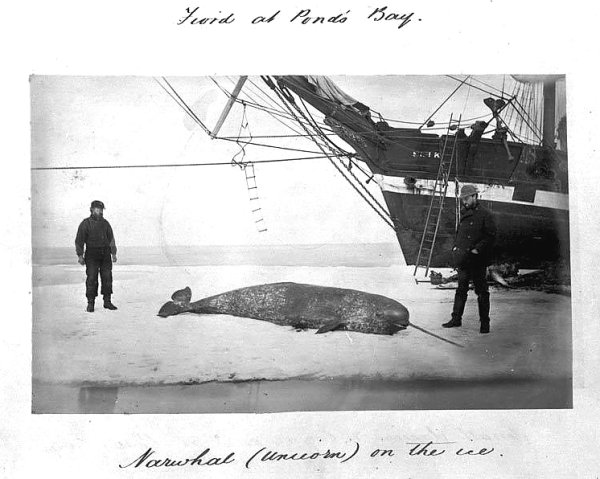|
The
male narwhal's extraordinary tusk results from the upper left incisor
tooth growing out in a counter-clockwise direction. Females do not
have a tusk. Like the antlers of deer, the tusk's sheer size might
serve to signal the strength and prowess of its owner when competing
with other males, for example for access to females. In old narwhals
the tusk can be as long as 10 feet (3 metres), which is extraordinary
given that the body length is only 15 feet (5 metres).
This
photograph forms part of an album taken by the gunner of the 'Erik'.
The album includes a further fifty-one photographs and the ship's
log.
The
'Erik' was a Dundee whaling boat at the time when the photograph
was taken. It sailed from Scotland to the whaling grounds at Baffin
Bay in Canada. The Narwhal was known as the 'Unicorn' to the whalers
and as Monodon monoceros to the scientist.

İSCRAN/National Library Scotland
Narwhal on the ice, 1876
|